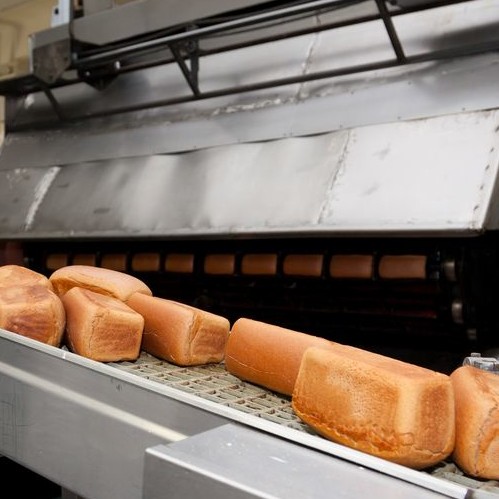
Packaging Temperature
What is Packaging Temperature?
Packaging temperature is the optimum temperature of a baked product which has just been cooled and sliced and is ready for placement in a protective bag or container.
This temperature point or range are designed to ensure proper moisture level to avoid condensation, thus ensuring safety and extended shelf-life.
How does it work?
The packaging temperature of a baked product and its cooling gradient are intimately related. There needs to be a proper balance between product temperature and moisture to ensure adequate slicing and packaging processes.
Once baked bread has cooled down to the optimum packaging temperature 95–105°F (35–40°C), its moisture content will drop which helps the finished product achieve optimum keeping qualities.
Application
Factors that affect packaging temperature include:
- Baking process (over- and under-baking)
- Bread cooling process (over- and under-cooling)
- Storage conditions of packaging material
- Temperature and relative humidity of the environment in the plant (temperature may be high in areas where the oven is close to the packaging area and in the absence of proper ventilation)
Quality considerations
Improper packaging temperatures can negatively impact the quality of the baked product. During bread cooling, a large temperature gradient can develop between the crust and the crumb. As cooling continues, this gradient will be reduced gradually and eventually reaches zero. Effects of improper packaging temperatures are detailed below.
Product temperature too low:
- Product has cooled and dried longer than normal
- The finished product is drier and firmer with brittle, harsh eating qualities (crumbly)
- The dryness and loss of moisture contribute to a faster loaf staling
- Significant moisture loss in bread crumb
Product temperature too high:
- Insufficient cooling and drying of product
- Bread sidewalls will be weak and may collapse while passing through the slicer
- Loaf slices will be ragged and may tear due to excessive moisture
- Bread crumb is too soft
- Gumming up of the slicer blades (increased downtime)
- Excess moisture due to condensation inside the wrapper
Product considerations
- Variety breads: Packaging temperature for variety bread such as rye breads should be lower, around 90ºF (32ºC). Such temperatures are recommended due to the product’s tendency to become gummy.
- Frozen dough operations: After blast-freezing, dough frozen pieces should be immediately packaged to maintain the product’s core temperature within the range of 10–0°F (-12 to -18°C).
Packaging temperature impact on product quality and shelf-life1
Wrapping baked goods at very high temperatures (product insufficiently cooled) leads to moisture condensation within the wrapper. This greatly affects product’s shelf-life as condensation encourages localized increases in product water activity and subsequent mold growth.
Upon cooling of sliced and packaged bread, excessive moisture is lost to condense within the wrapper. This moisture will be reabsorbed by the product crust encouraging its further softening (critical for the texture of crispy products).
References
- Cauvain, S.P. “Bread and Other Fermented Products.” Baking Problems Solved, 2nd edition, Woodhead Publishing, Elsevier Ltd., 2017, pp. 187–188.

